Four reasons why a 14-inch Surface Pro 4 would be perfect for Windows 10
Bigger, better and a stronger ecosystem
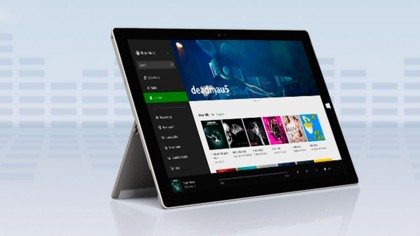
Introduction
In the past, Microsoft justified its decision to enter the hardware space, competing with partners like Dell, HP and Lenovo, by saying that the Surface line is designed to showcase the power of Windows. In essence, the Surface tablet is hardware for the Windows enthusiast, a window into Microsoft's vision for Windows.
With rumors of the impending launch of an even larger Surface Pro 4, with a screen size of 13 or 14 inches, the new slate could help highlight key features of Microsoft's nascent Windows 10 operating system. The Surface Pro line has seen its screen size grow steadily, from a 10.6-inch panel on the first two generations to 12.1 inches on the current Surface Pro 3.
Here are four reasons why a 14-inch Surface Pro 4, if rumors are accurate, would be the perfect hardware to showcase the power of Windows 10.
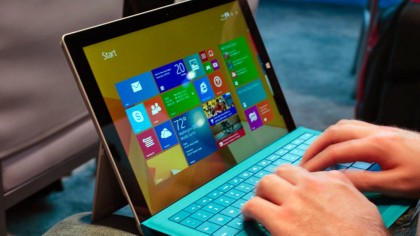
Snap to it
Windows 10 is about productivity, and Microsoft highlighted the different ways to multitask using Snap, a feature that has evolved since it debuted on Windows 7.
With Snap on Windows 10, there are even more ways to multitask. Now, you can snap legacy Win32 apps and new Store apps side by side, and you can run up to four apps simultaneously, one in each corner of the screen.
On a larger Surface Pro 4 screen, you'll be able to see and do more with the content in each window. Microsoft is leading the multitasking charge, but rivals are catching up. Samsung has implemented different ways to run multiple windows on its Android-powered Galaxy phones and tablets, and Apple is bringing the ability to run two apps side by side on iOS 9.
In fact, Apple's introduction of multitasking with iOS 9 at WWDC has spurred additional speculation that the feature would best be showcased on a large-format iPad Pro.
Microsoft has historically positioned the Surface Pro line as a tablet that comes with the productivity power of an Ultrabook, and a 14-inch Surface Pro 4 could further this vision. The first two Surface Pro tablets came with compact screens that many viewed as too cramped for serious multitasking and productivity.
It wasn't until the 12.1-inch Surface Pro 3 debuted that consumers started seriously looking at Microsoft's tablets. An even larger Surface Pro 4 will compete well with devices like the popular Dell XPS 13, Asus Zenbook UX305 and HP Spectre x360. Even Samsung's rumored to be going big with its next Windows slate.
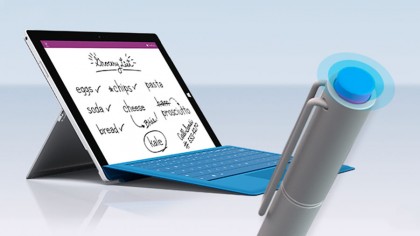
Power of the pen
Windows has a history of supporting inking. The feature, beloved by students and business professionals for taking notes, has been a staple of Windows-based tablets since the early 2000s, but Microsoft has been renewing its support for inking in a different way for consumers on Windows 10.
The new Microsoft Edge browser on Windows 10 enables users to take screenshots and annotate web pages.
If the Surface Pro 4 arrives with a larger screen, it would make markups easier. While writing on a webpage with a Wacom or N-Trig stylus is easy given the precision stylus tip, attempting to mark up a page with stubby fingertips is more challenging given the smaller screens on the Surface 3 and Surface Pro 3.
Additionally, a larger digital canvas would make it easier to jot notes on OneNote. Writing on a glass pad is a far different experience than writing on a paper pad. On glass, your handwriting comes out bigger, like a first-grader learning to doodle in cursive for the first time. Hopefully, a larger screen will enable users to fit more of their thoughts on a digital page without requiring too much scrolling.
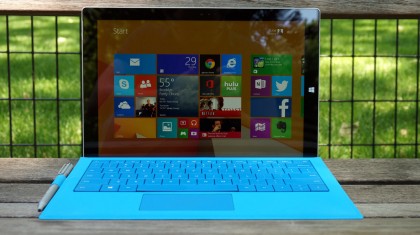
Getting juiced-up
The Surface Pro 4 will likely arrive with Intel's sixth-generation Skylake processor. Intel showcased the power of Skylake on stage at IDF 2015, with a Surface Pro 3 retrofitted with its chip. In the demo, the Surface Pro 3 could drive up to three 4K displays at 60 frames per second, and decode 4K videos on the integrated Gen9 graphics using only 1% of CPU power.
The main draw for Skylake is battery life. We still don't know much about the battery improvements that Skylake will deliver over the Surface Pro 3's fifth-generation Intel Broadwell architecture, but Intel has delivered progressively better battery life numbers with each successive processor generation.
Even if battery life is kept the same moving from Broadwell to Skylake, moving to a larger 14-inch screen gives Microsoft more room inside the tablet to fit a larger battery, which could result in longer compute times between charging.
The current Surface Pro 3 is rated for nine hours of battery life, but real-world usage numbers are often lower. In our strenuous battery test with the screen set to maximum brightness, the Surface Pro lasted for 3 hours and 55 minutes.
A larger tablet enabled by the larger screen could potentially deliver a full workday of battery life in real-world usage.
An increase in power performance could help Microsoft and Intel save face in light of a power-consumption bug that causes Windows 10 to consume more power with an Intel processor. The two companies are working on drivers to optimize battery performance, but some users report a battery life drop of as much as 10% after upgrading to Windows 10.
A larger device coupled with a larger battery may make the 14-inch Surface Pro 4 heavier. The current 12.1-inch Surface Pro 3 weighs 1.75 pounds (0.79kg) without the pen or Type Cover attached.
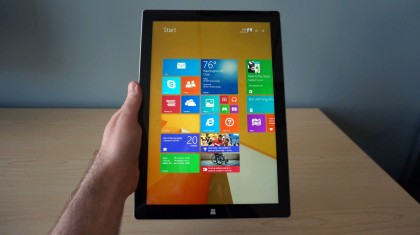
It's show time!
It's not all work and no play for Windows 10. Microsoft introduced refreshed apps and experiences to help you relax and take advantage of your downtime.
For Xbox One owners, Windows 10 enables you to stream your games to your PC. If someone is watching the news in your living room and you're aching to play Halo, you can stream it over your home Wi-Fi network to your Surface Pro 4's 14-inch screen, attach your Xbox controllers and play your game as if you're in your living room.
Essentially, your Surface Pro 4's larger screen would serve as a monitor for you to stream your Xbox One games. This Windows 10 feature enables easy screen-mirroring of your console over your home network.
Additionally, movies and videos would also be more pleasurable to watch on a larger screen. Even though the Surface Pro 3 has a 12.1-inch screen, most videos are shot in a 16:9 format. This means that videos played on the Surface Pro 3 won't take up the entire screen, given the tablet's unusual 3:2 aspect ratio that's better suited for productivity. A 14-inch screen brings more screen real estate to video playback, even if there is letterboxing involved.
Gamers may also appreciate the improved processor and graphics performance of Skylake, if the Surface Pro 4 ships with Intel's latest and greatest chip. We'll have to wait and see if Intel's RealSense cameras make it to the front or rear of the Surface Pro 4, which could open the doors to augmented-reality gaming and better biometric security.
- Read our review of Windows 10